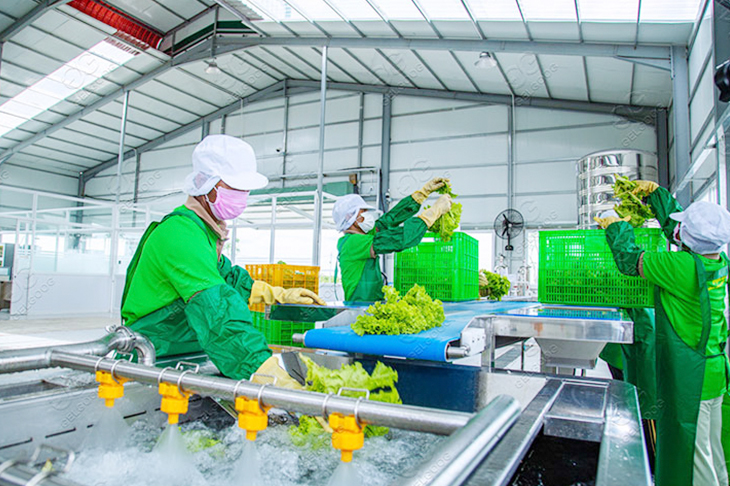Leafy greens are one of the healthiest food groups out there. They are packed with vitamins and minerals that are essential for our body to function properly. From kale to spinach, leafy greens are versatile ingredients that can be used in a variety of dishes. However, processing leafy greens can be a challenge, as they tend to wilt and spoil quickly. In this blog, we will explore some of the best vegetable processing techniques for leafy greens that will help you retain their nutrients and freshness.
Washing and Cleaning
The first step in processing leafy greens is washing and cleaning them thoroughly. This is important because leafy greens are grown in soil and can be exposed to harmful bacteria and pesticides. To wash leafy greens, fill a bowl with cold water and add a little bit of vinegar. Soaking greens in the vinegar solution for a few minutes will help get rid of any dirt, and bacteria on them. Rinse the leaves under running water and dry them with a clean kitchen towel or salad spinner.
Trimming and Cutting
Once your leafy greens are clean and dry, you can begin trimming and cutting them. Trimming is necessary to remove any damaged or wilted parts of the green. Cutting or shredding leafy greens into smaller pieces makes them easier to handle, cook, and consume. The best way to cut leafy greens is to roll them tightly and then slice them thinly. For larger greens like kale or collard, remove the tough centre vein and only use the leaves. You can even cut the leaves into manageable pieces and store them in reusable, airtight containers.
Blanching or Steaming
Blanching or steaming leafy greens is another processing technique that can help you retain their nutrients and freshness. To blanch or steam, bring a pot of water to a boil and add your greens. Boil or steam the greens for two to three minutes, then plunge them into cold water before drying. This process helps to break down tough fibres, preserve nutrients, and brighten the colour of the greens. Once the greens are blanched or steamed, you can use them in salads, soups, or stir-fries.
Freezing
Freezing is a great way to preserve leafy greens if you have excess produce. This processing method works well for greens like spinach, which tends to wilt quickly. To freeze your greens, blanch or steam them as previously explained but for a shorter time. After blanching, plunge them into an icy bath and drain off any excess water. Place the greens in a freezer-safe container and store them in the freezer for later use. Frozen greens are great for adding to smoothies or soups.
Drying
Drying leafy greens is another vagetable processing technique that can help you extend their shelf life. To dry leafy greens, spread them out in a single layer on a baking sheet, and place them in the oven on low heat for a few hours. Alternatively, you can lay the greens out on a drying rack, and let them air dry for a few days. Once the greens are dry, store them in an airtight container. You can use dried greens to add flavour to soups or stews.
Conclusion
It is important to process leafy greens in a way that helps to retain their nutritional value, freshness, and flavour. The mechanical methods used for processing leafy greens are up to manufacturers, but following safe hygiene and processing guidelines are necessary. With the above techniques, you can be sure that your leafy greens are safe, healthy, and delicious. Experiment with the different processing techniques and find the method that works best for you. Remember, a little bit of care goes a long way in keeping your leafy greens fresh and nutritious. Enjoy!


